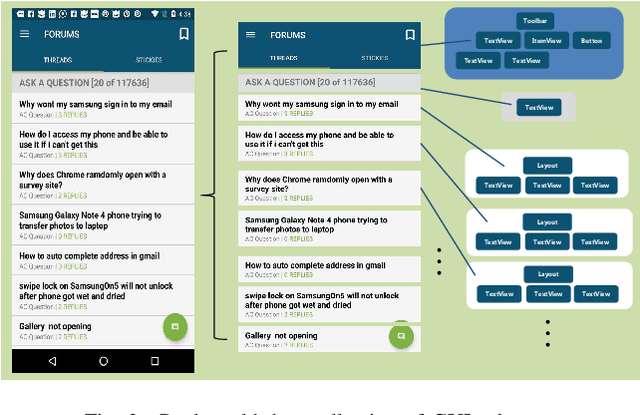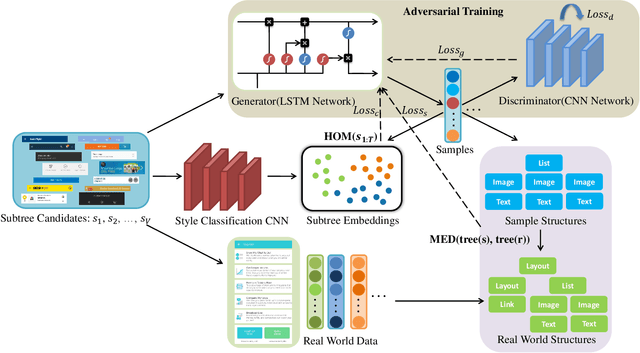Tianming Zhao
Jilin University
EarSpy: Spying Caller Speech and Identity through Tiny Vibrations of Smartphone Ear Speakers
Dec 23, 2022Abstract:Eavesdropping from the user's smartphone is a well-known threat to the user's safety and privacy. Existing studies show that loudspeaker reverberation can inject speech into motion sensor readings, leading to speech eavesdropping. While more devastating attacks on ear speakers, which produce much smaller scale vibrations, were believed impossible to eavesdrop with zero-permission motion sensors. In this work, we revisit this important line of reach. We explore recent trends in smartphone manufacturers that include extra/powerful speakers in place of small ear speakers, and demonstrate the feasibility of using motion sensors to capture such tiny speech vibrations. We investigate the impacts of these new ear speakers on built-in motion sensors and examine the potential to elicit private speech information from the minute vibrations. Our designed system EarSpy can successfully detect word regions, time, and frequency domain features and generate a spectrogram for each word region. We train and test the extracted data using classical machine learning algorithms and convolutional neural networks. We found up to 98.66% accuracy in gender detection, 92.6% detection in speaker detection, and 56.42% detection in digit detection (which is 5X more significant than the random selection (10%)). Our result unveils the potential threat of eavesdropping on phone conversations from ear speakers using motion sensors.
RIBAC: Towards Robust and Imperceptible Backdoor Attack against Compact DNN
Aug 22, 2022
Abstract:Recently backdoor attack has become an emerging threat to the security of deep neural network (DNN) models. To date, most of the existing studies focus on backdoor attack against the uncompressed model; while the vulnerability of compressed DNNs, which are widely used in the practical applications, is little exploited yet. In this paper, we propose to study and develop Robust and Imperceptible Backdoor Attack against Compact DNN models (RIBAC). By performing systematic analysis and exploration on the important design knobs, we propose a framework that can learn the proper trigger patterns, model parameters and pruning masks in an efficient way. Thereby achieving high trigger stealthiness, high attack success rate and high model efficiency simultaneously. Extensive evaluations across different datasets, including the test against the state-of-the-art defense mechanisms, demonstrate the high robustness, stealthiness and model efficiency of RIBAC. Code is available at https://github.com/huyvnphan/ECCV2022-RIBAC
* Code is available at https://github.com/huyvnphan/ECCV2022-RIBAC
GUIGAN: Learning to Generate GUI Designs Using Generative Adversarial Networks
Jan 27, 2021



Abstract:Graphical User Interface (GUI) is ubiquitous in almost all modern desktop software, mobile applications, and online websites. A good GUI design is crucial to the success of the software in the market, but designing a good GUI which requires much innovation and creativity is difficult even to well-trained designers. Besides, the requirement of the rapid development of GUI design also aggravates designers' working load. So, the availability of various automated generated GUIs can help enhance the design personalization and specialization as they can cater to the taste of different designers. To assist designers, we develop a model GUIGAN to automatically generate GUI designs. Different from conventional image generation models based on image pixels, our GUIGAN is to reuse GUI components collected from existing mobile app GUIs for composing a new design that is similar to natural-language generation. Our GUIGAN is based on SeqGAN by modeling the GUI component style compatibility and GUI structure. The evaluation demonstrates that our model significantly outperforms the best of the baseline methods by 30.77% in Frechet Inception distance (FID) and 12.35% in 1-Nearest Neighbor Accuracy (1-NNA). Through a pilot user study, we provide initial evidence of the usefulness of our approach for generating acceptable brand new GUI designs.
 Add to Chrome
Add to Chrome Add to Firefox
Add to Firefox Add to Edge
Add to Edge